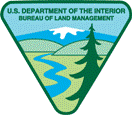United States Department of the Interior

United States Bureau of Land Management: Staff Publications
Date of this Version
2007
Citation
Hosten, P. E., H. Whitridge, D. Schuster, and J. Alexander. 2007. Livestock on the Cascade-Siskiyou National Monument: A Summary of Stocking Rates, Utilization, and Management. U.S. Department of the Interior, Bureau of Land Management, Medford District. http://soda.sou.edu/bioregion.html
Abstract
This paper describes range management related practices to provide a historic and landscape context for studies examining the influence of livestock on objects of biological interest within the Cascade-Siskiyou National Monument. Historic records show livestock numbers increased rapidly following initial settlement by Euro-Americans. Anecdotal data suggests that stocking rates early in the last century were greater than current stocking rates by at least an order of magnitude. Historic unregulated season-long use of the uplands during the spring, summer and fall resulted in severe environmental degradation. Disagreements between livestock operators and the desire of agency personnel to improve the condition of the range led to large-scale fencing and concomitant water development projects. Such projects contributed to improved livestock control in riparian areas, a retardation of livestock movement to higher elevations, and improved livestock dispersion in the absence of herding. Observation of livestock use on upland shrubs and winter deer dieback resulted in exclusion studies culminating in more precise timing of livestock use to preserve the browse resource for native ungulates at lower elevations. While livestock use of shrubs at lower elevations has been reduced, use of upland shrubs at the end of the grazing season continues in moderate to high use areas accessible to livestock. Large-scale patterns of livestock use are associated with environmental factors such as elevation, soil texture, and management factors such as distance from water-source, distance from roads, and past vegetation manipulations. Activities associated with livestock management include: road construction, aerial fertilization, herbicide application, seed application, development of water-sources, vegetation manipulation (scarification), and prescribed fire. At the time of implementation, many of these activities were considered to benefit wildlife as well as rangeland condition. Large-scale vegetation manipulation was initiated in the 1950s. Since then, associated seed applications have introduced over 50 grasses and forbs across the Monument. Miles of fence construction appears bimodal over time – an initial spate of construction followed by more recent renovation. Water developments appear associated with fence construction, likely to ensure water availability within newly fenced pastures for stock later in the season compared to historic times.


Comments
Used by permission.